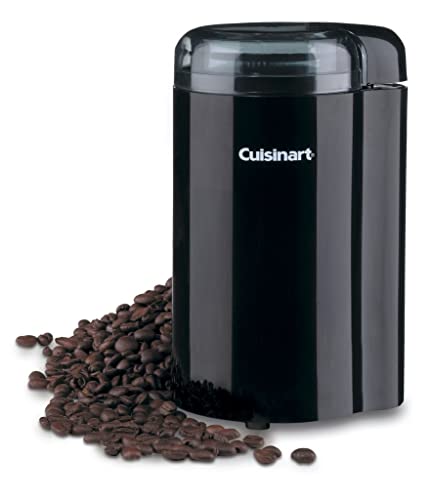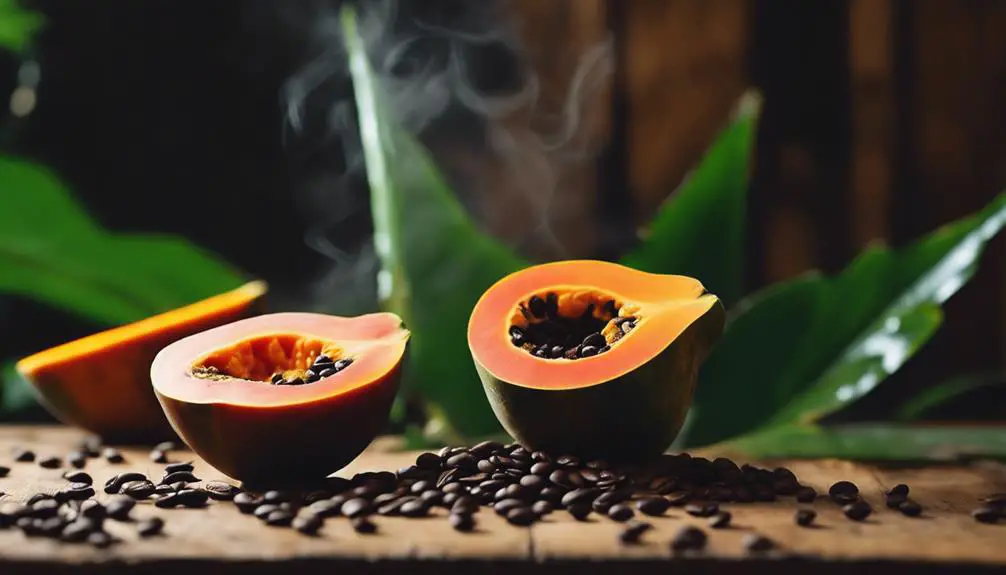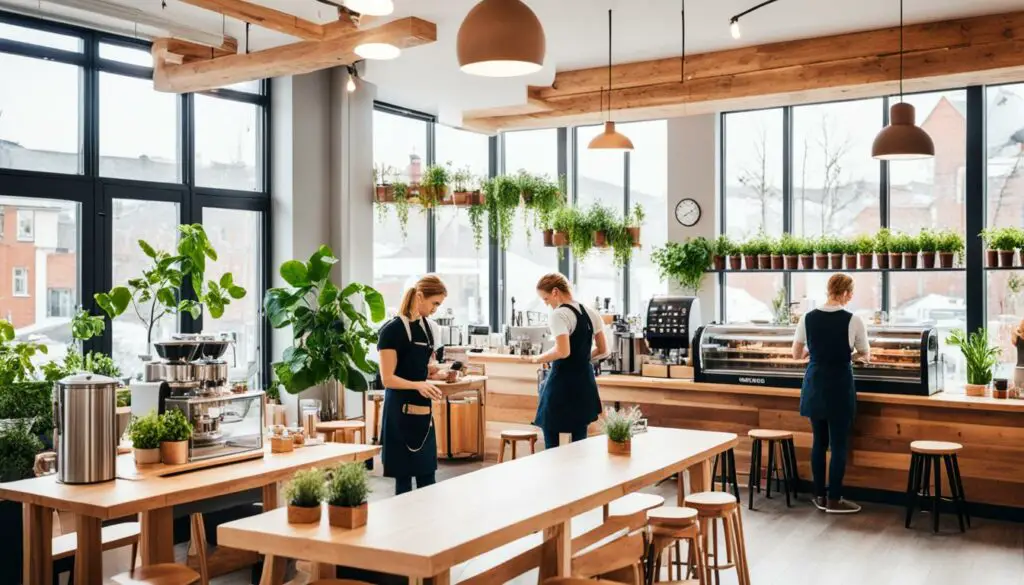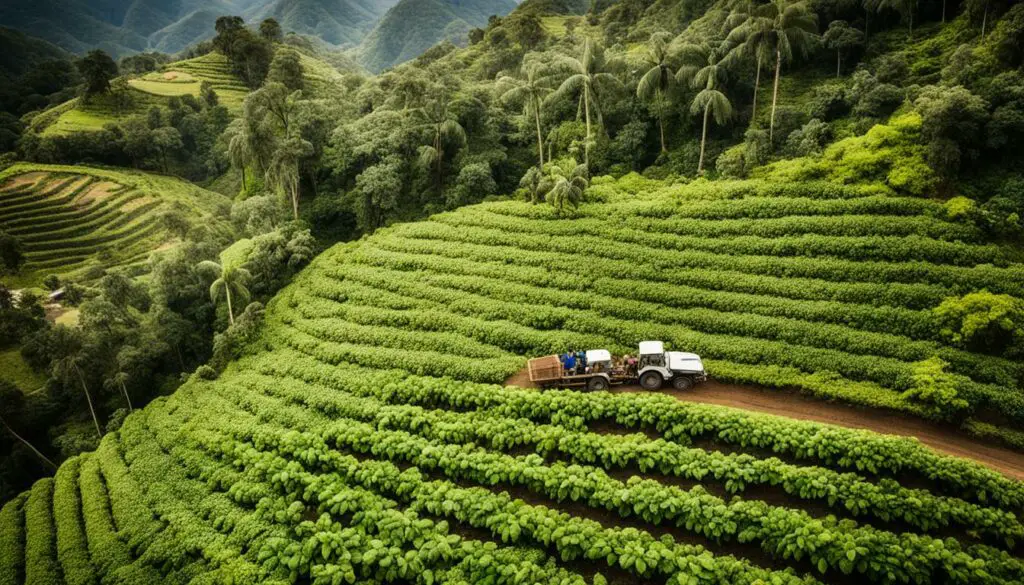Grinding your own coffee beans is a great way to get the freshest, most flavorful cup of coffee possible. It’s also a great way to save money, since pre-ground coffee can be quite expensive.
But it’s not just the flavor that makes grinding your own beans worthwhile – it’s also the aroma. There’s nothing quite like the smell of fresh coffee beans being ground, and it’s an experience you can enjoy every morning if you take the time to grind your own beans.
Of course, you’ll need a coffee grinder to get the job done. There are many different types and brands of coffee grinders on the market, so it can be tough to know which one to choose.
Here are a few things to keep in mind when shopping for a coffee grinder:
1. Blade or Burr?
The two main types of coffee grinders are blade grinders and burr grinders. Blade grinders work by chopping up the beans with a spinning blade, but the resulting grind can be somewhat uneven. It is, however, fine for most brewing methods. while burr grinders crush the beans between two abrasive surfaces. They are the most common type of coffee grinder and are relatively inexpensive and easy to find.

Generally speaking, burr grinders are better than blade grinders because they produce a more uniform grind, which is important for making a good cup of coffee. They’re also more expensive, so if you’re on a budget, a blade grinder may be the way to go.
There is a third option, hand crank grinders: these grinders are perfect for those who want the freshest possible cup of coffee. Because they do not use electricity, they can be used anywhere, which makes them great for travel and they have the added benefit of being small and easy to pack. The only downside is that they can be a bit slow to use, so, for most circumstances, we don’t recommend them.
2. Electric or Manual?
Coffee grinders come in both electric and manual varieties. Electric grinders are obviously more convenient, but they’re also more expensive.
Manual grinders require a little more effort, but they’re usually less expensive, and many coffee aficionados prefer the taste of coffee made with beans ground by a manual grinder. However, we believe that it really comes down to personal preference in the end. If you’re on a budget or if you like the idea of a more hands-on approach, go with a manual grinder. If you want something that’s quick and easy, go electric.
3. Capacity
Some coffee grinders can only handle a small number of beans at a time, while others have large hoppers holding enough beans to make several cups of coffee.
Think about how much coffee you drink on a daily basis and choose a grinder with a capacity that meets your needs.
4. Adjustability
A good grinder will allow you to adjust the grind size to suit your preferences and the type of brewing method you’re using. Whether you like your coffee strong and bold or weak and mellow, a grinder with adjustable settings will help you achieve the perfect cup every time. So if you’re serious about your coffee, ditch the pre-ground stuff and invest in a quality grinder. Your taste buds will thank you.
5. Durability
When it comes to coffee grinders, quality is important. After all, you don’t want to have to replace your grinder every year. Look for grinders made with high-quality materials like stainless steel or ceramic. These materials are built to last and will stand up to heavy use. In addition, look for grinders with sturdy construction. Avoid flimsy models that feel like they could fall apart at any moment. With a little bit of research, you can find a coffee grinder that will give you years of use. And that’s definitely worth the investment.
How to Grind Coffee Beans
Whether you use a Blade Grinder or a Burr Grinder, grinding your own coffee beans at home can be convenient, rewarding, and even save you some money. While the actual process of grinding coffee beans is fairly simple, there are a few things you should know to make sure you’re doing it right.
1. Choose the right grind size for your brewing method.
The grind size you need will depend on the brewing method you’re using. For example, if you’re making coffee in a French press, you’ll want a coarse grind. If you’re using an espresso machine, you’ll need a fine grind. And if you’re using a drip coffee maker, you’ll need a medium grind.
2. Don’t overdo it.
It’s important not to over-grind your beans. If you grind for too long, the resulting powder will be too fine and will make your coffee taste bitter. On the other hand, if you don’t grind long enough, the water will simply flow through the grounds without extracting all of the flavors.
3. Be consistent.
It’s also important to be consistent with your grind size. If your grind is too coarse in some areas and too fine in others, the water will extract flavor unevenly, resulting in an inconsistent cup of coffee.
4. Store your coffee properly.
Once you’ve ground your beans, it’s important to store them in an airtight container in a cool, dark place. Coffee beans are sensitive to light, heat, and moisture, so it’s important to keep them in an environment that will preserve their flavor.
5. Use within two weeks.
Ideally, you should use your ground coffee beans within two weeks of grinding them. After that, the flavor will begin to deteriorate.
How to grind coffee beans without a grinder
You don’t need a coffee grinder to grind coffee beans. There are several methods you can use to grind coffee beans without a grinder. One method is, believe it or not, to use a blender.
Add the coffee beans to the blender and pulse until the beans are ground to the desired consistency.
Another method is to use an old-fashioned mortar and pestle. Place the coffee beans in the mortar and use the pestle to grind them into a powder.
You can also use a rolling pin to grind coffee beans. Place the beans on a cutting board and roll over them with the rolling pin until they are ground up.
If you don’t have any of these items, you can even use a hammer to grind your coffee beans! Just place the beans in a zip-top bag and seal it shut. Then, using a hammer, carefully hit the bag until the beans are ground up. Whatever method you choose, grinding coffee beans without a grinder is easy to do.
You just need to be patient and have some elbow grease. So go ahead and give it a try!
How long to grind coffee beans?
The answer to this question depends on a number of factors, including the type of coffee beans being used, the grind size desired, and the brewing method.
In general, it is best to grind coffee beans just before brewing, as this helps to ensure that the beans are at their freshest. However, if time is limited, grinding the beans ahead of time is still better than using pre-ground coffee.
The key is to find the right balance between freshness and convenience. For most people, this means grinding the beans immediately before brewing but storing them in an airtight container until ready to use.
By remembering these simple things, you can ensure that your coffee always tastes its best.
How to grind coffee beans with a blender
As we have already indicated, there are many ways to grind coffee beans, but using a blender is one of the quickest and easiest methods, and it’s super-simple as well.
First, add the desired amount of beans to the blender. Then, put the lid on and pulse the beans until they reach the desired consistency.
For a finer grind, pulse the beans for a longer time. For a coarser grind, pulse the beans for less time.
Once the beans are ground, remove the lid and pour them into a container. Be sure to clean out the blender immediately after use to avoid any stale coffee flavors in future batches. With a little practice, anyone can learn to grind coffee beans using a blender.
How to grind coffee beans for espresso
Many people believe that making good espresso is all about having the right equipment. While it’s true that you need a quality espresso machine and coffee grinder, the most important ingredient is the coffee beans.
In order to make a great espresso, you need to start with freshly roasted beans and grind them to a consistent size.
Espresso calls for a very fine grind, somewhere between powder and sand. If the grind is too coarse, the water will flow through the grounds too quickly and produce a weak espresso.
If the grind is too fine, the water will have difficulty flowing through and produce an over-extracted espresso.
So, to get the perfect grind, we think that it’s important to use a burr grinder rather than a blade grinder. That’s because burr grinders produce a more consistent grind by crushing the beans between two abrasive surfaces, whereas blade grinders, chop the beans unevenly, resulting in a range of different particle sizes. When grinding coffee for espresso, it’s important to keep this in mind so that you can create a smooth and flavorful cup of coffee.
- EASY CLEANUP — DISHWASHER SAFE GRINDING BOWL: The grinding bowl on this coffee bean grinder is designed with durable stainless steel. Its removable for easy filling and pouring and is dishwasher safe.
- GRIND ENOUGH TO BREW UP TO 12 CUPS OF COFFEE: If you love the delicious taste of coffee made from freshly ground beans, this electric coffee grinder is perfect for the job whether youre grinding coffee for a quick cup or a full pot
- SIMPLE & INTUITIVE: The coffee grinder is so easy to use that youll want to drink flavorful coffee made from freshly ground coffee beans everyday. Just place the lid on the grinder and press the button to grind coffee. Release to stop grinding.
- DURABLE STAINLESS STEEL BLADES: With the durable stainless steel blades, this grinder makes easy work of grinding everything from coffee beans to herbs and spices.
- REDUCE CLUTTER WITH HIDDEN CORD STORAGE: Hideaway cord storage at the bottom of the grinder stores the cord neatly and out of sight when its not in u
Prices pulled from the Amazon Product Advertising API on:
Product prices and availability are accurate as of the date/time indicated and are subject to change. Any price and availability information displayed on [relevant Amazon Site(s), as applicable] at the time of purchase will apply to the purchase of this product.
How many coffee beans to grind per cup?
The amount of coffee beans you need to grind per cup depends on a few factors, including the type of coffee you’re making, the coarseness of the grind, and your personal preferences.
For instance, if you’re making a pot of drip coffee, you’ll need to use a finer grind than if you’re making a french press. In general, you’ll need to use about 2 tablespoons of coffee per 6-ounce cup.
Alternatively, if you like your coffee on the weaker side, you can use less; if you like it stronger, use more.
In short, experiment until you find the perfect ratio for your taste.
Conclusion
There are many ways to grind coffee beans and in this blog post we have covered some of the most common ways to get good results. Whether you’re using a blade grinder, a burr grinder, or even a blender, the key is to find the right grind size for your brewing method and personal preferences. With a little practice, anyone can learn how to grind coffee beans and make a great cup of coffee.
So, now that you know how to grind coffee beans like a pro, it’s time to put your new skills to the test! Start by picking up a bag of fresh, whole beans and give it a try. We promise you won’t be disappointed.














